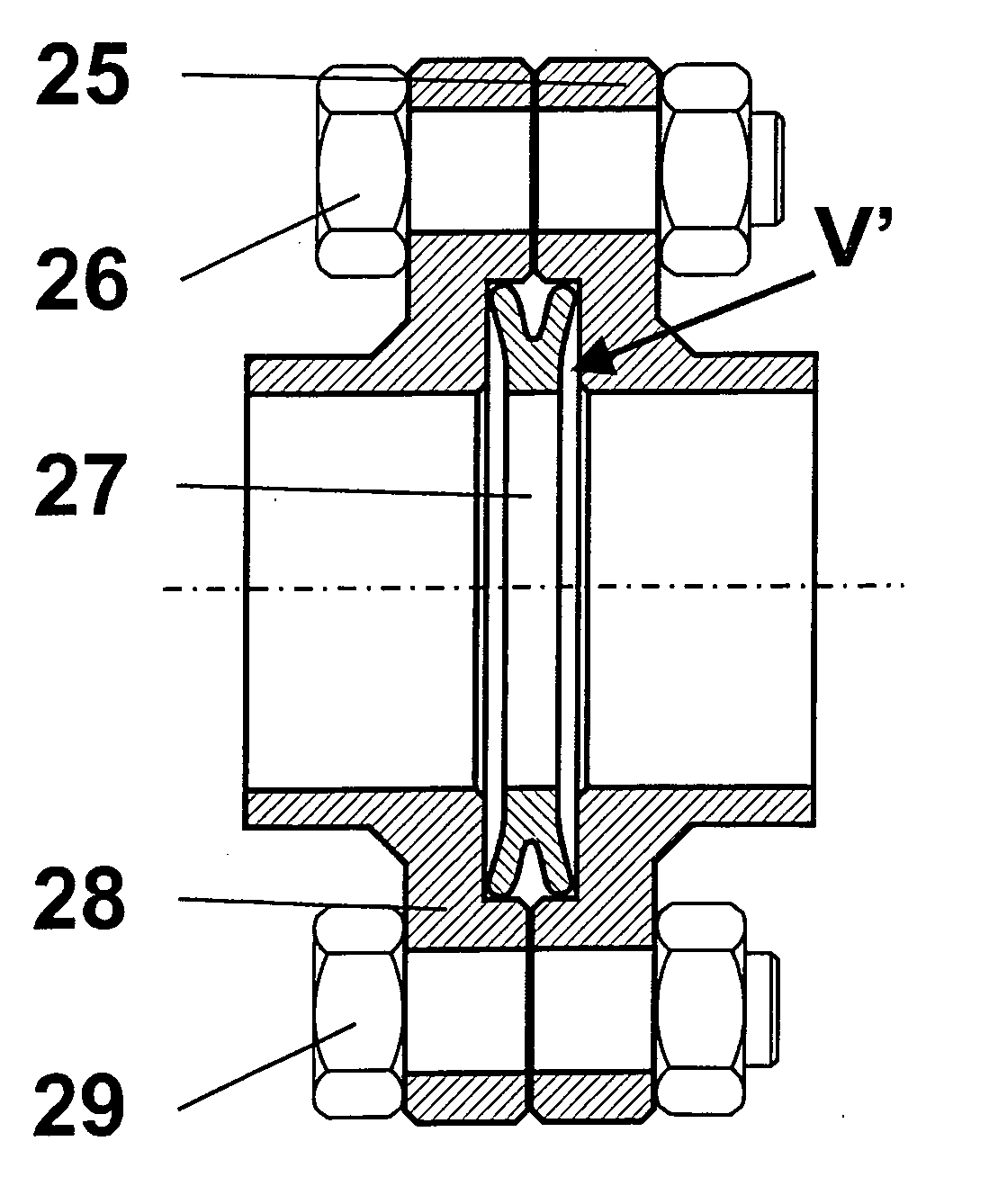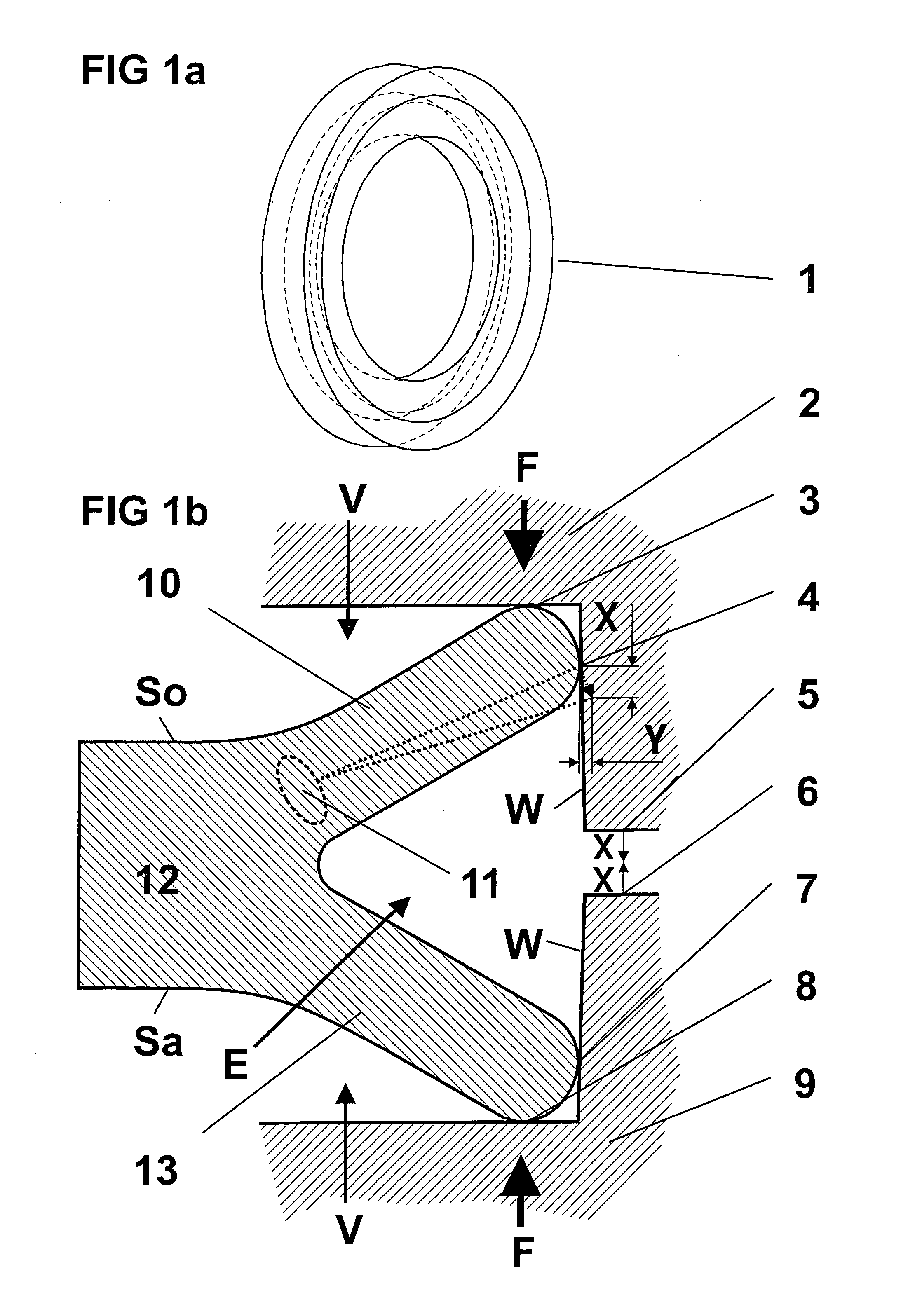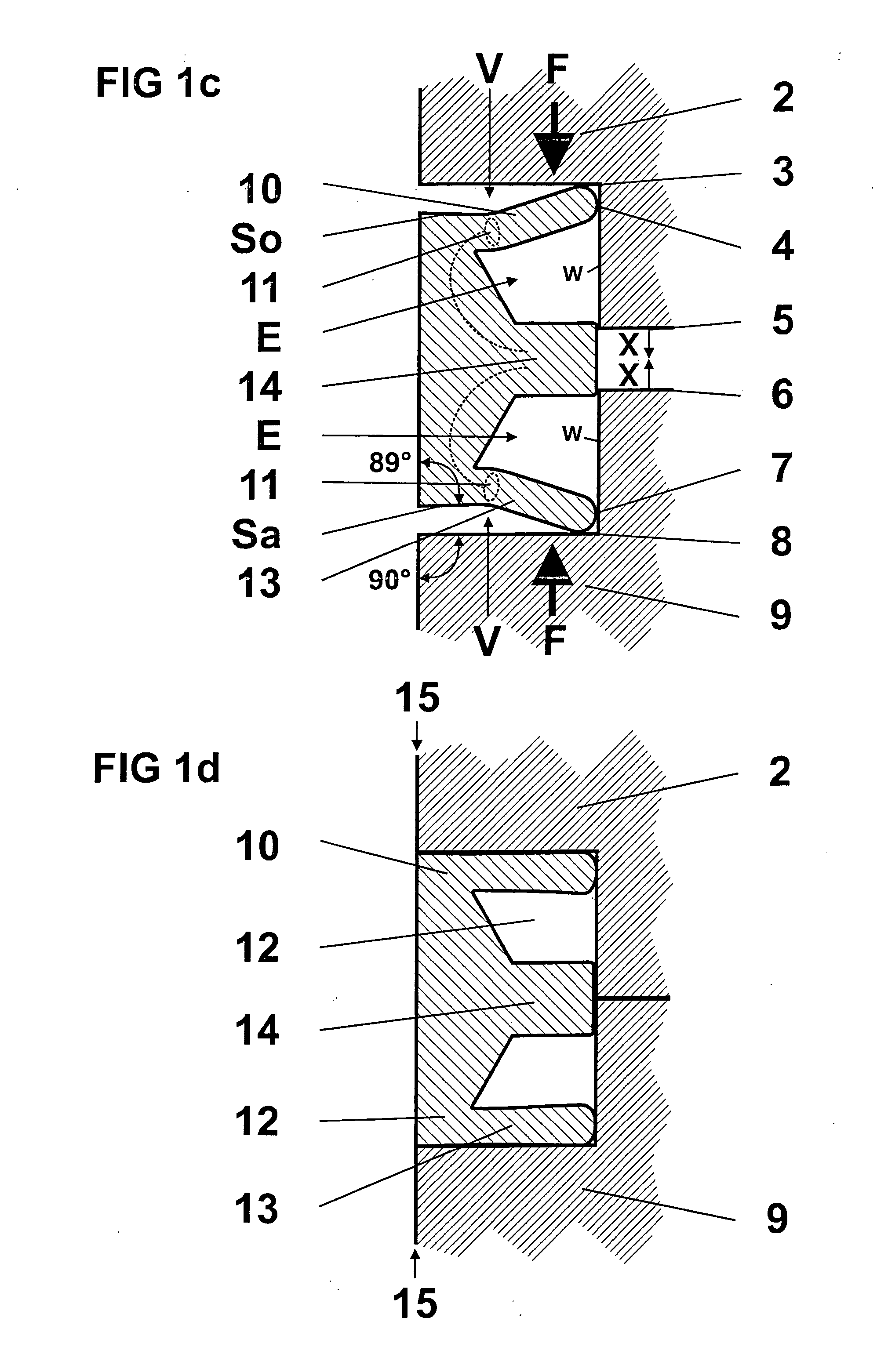Expansion Seal, Especially for Gases
a technology of expansion seals and sealing elements, applied in the field of expansion seals, can solve the problems of reducing the sealing properties of metal seals, no longer being sealed, and reducing the sealing properties of o-rings with respect to helium, so as to increase the sealing material's effectiveness, and reduce the demands of the surface smoothness of the sealing elements. surprisingly the effect of pressur
- Summary
- Abstract
- Description
- Claims
- Application Information
AI Technical Summary
Benefits of technology
Problems solved by technology
Method used
Image
Examples
Embodiment Construction
[0036]A sealing ring as schematically shown in FIG. 1 is shaped like a wheel rim. A Y-shaped indentation (E) is shown in section in particular in FIGS. 1b-1d.
[0037]What turned out to be particularly favorable according to FIG. 1a is an arrangement of the legs (10+13) protruding beyond the thickness of the seal in the inner zone, in which before the pressing operation the axes of the legs form an angle of about 45° with the inner wall (W) of the flange. This arrangement is particularly preferred, because the forces produced during the pressing operation thereby are uniformly distributed over the two legs and thus form two sealing zones perpendicular to each other, which together achieve a particularly good tightness. In this case, the two disks corresponding to the legs of FIG. 1b are positioned at an angle of 90° with respect to each other before pressing.
[0038]A non-rotatable flange connection for better handling is achieved in that before the pressing operation the clearance desi...
PUM
| Property | Measurement | Unit |
|---|---|---|
| Diffusion barrier | aaaaa | aaaaa |
| Pressure | aaaaa | aaaaa |
| Shape | aaaaa | aaaaa |
Abstract
Description
Claims
Application Information
 Login to View More
Login to View More - R&D
- Intellectual Property
- Life Sciences
- Materials
- Tech Scout
- Unparalleled Data Quality
- Higher Quality Content
- 60% Fewer Hallucinations
Browse by: Latest US Patents, China's latest patents, Technical Efficacy Thesaurus, Application Domain, Technology Topic, Popular Technical Reports.
© 2025 PatSnap. All rights reserved.Legal|Privacy policy|Modern Slavery Act Transparency Statement|Sitemap|About US| Contact US: help@patsnap.com



